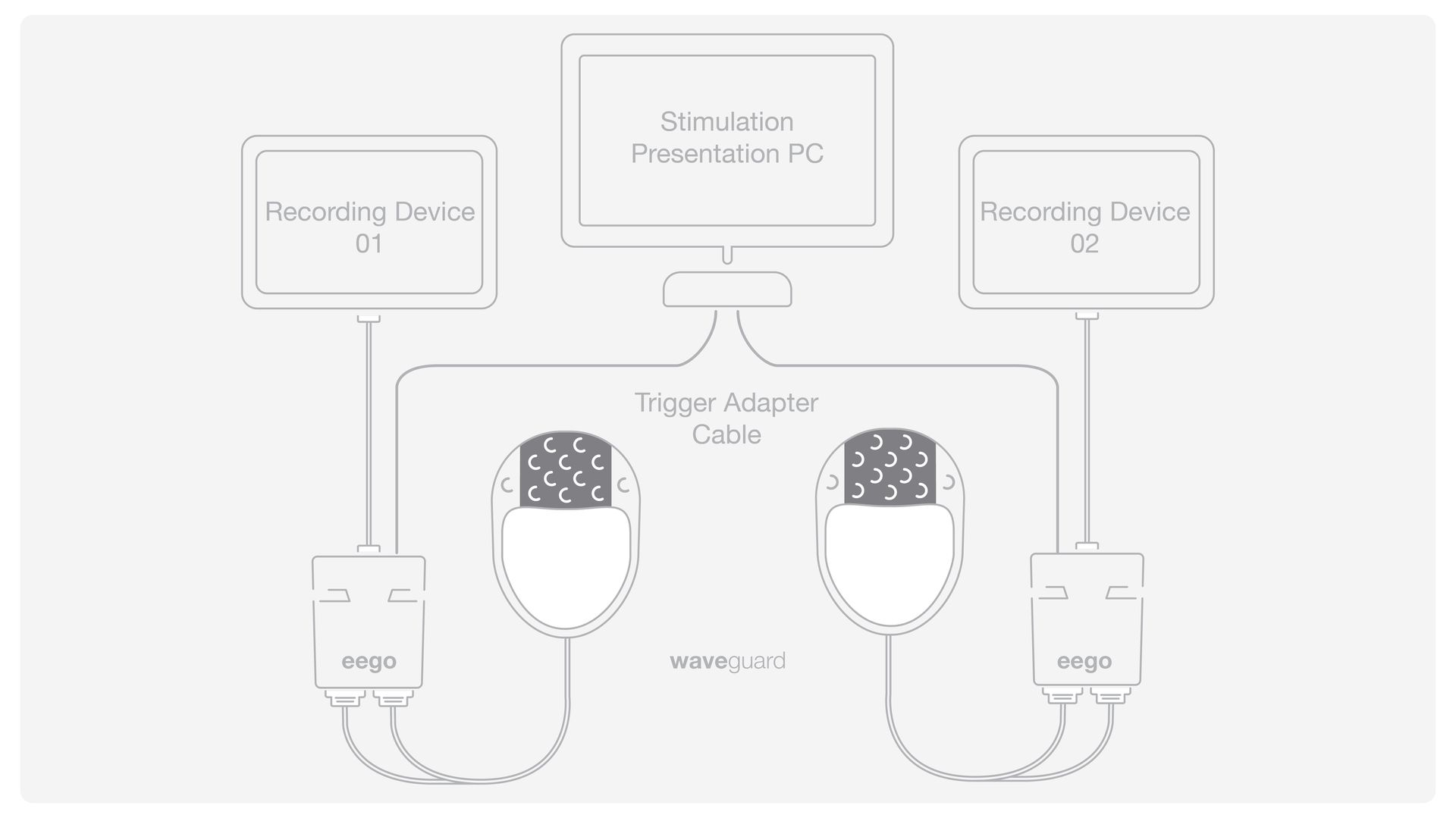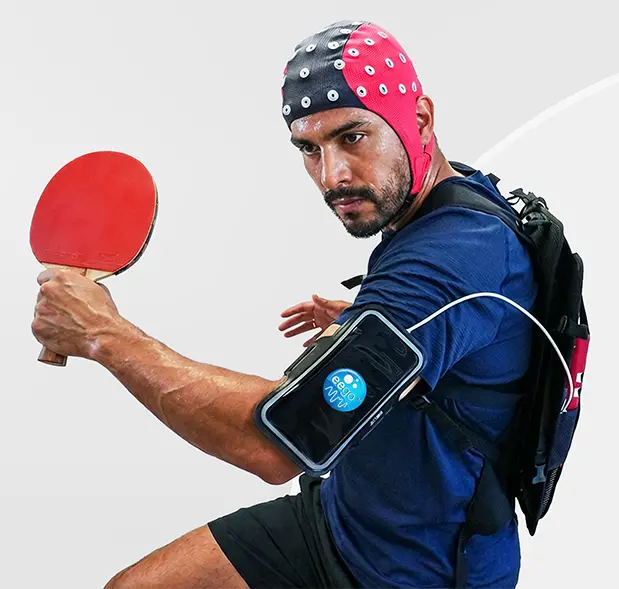Hyperscanning
Hyperscanning is being explored in various application fields to gain insight into the neural underpinnings of inter- and intra-brain interactions on the central and peripheral systems. Such studies involve data acquisition from two or more subjects simultaneously while they participate to achieve a common goal by cooperating or competing.
Multiple neuroimaging methods such as fNIRS, MEG, fMRI and EEG may be incorporated within a hyperscanning study, however, EEG remains a popular choice due to its excellent temporal resolution and portability. In a study published by Nam et al. (2020), EEG and MEG were reported to be the most used neuroimaging methods for hyperscanning studies, and most of the research was focused on applications revolving around cognition (48%), decision-making tasks (26%) and motor synchronization (23%).
Setup Requirements and Technological Challenges
Given that the experimental setup should consider two or more subject recordings simultaneously and mandate the use of multiple devices, the choice of equipment and the experiment design are crucial. Some common challenges in hyperscanning studies include:
Synchronization issues
To synchronize multiple subject recordings, users need to make sure that the EEG devices can receive a TTL trigger input or LSL event marker across multiple datasets.
Experiment design
The lack of being able to follow a structured or semi-structured setup which would allow experimenters more control as compared to unstructured or naturalistic setups where the subject can freely interact with the environment.
Event markers in all subject data files
Event markers (TTL triggers, user annotations or LSL network events) should be present in all subject EEG recordings to make post-hoc analysis easier. For the same, a timing test is always recommended if triggers or software events are being sent to the EEG data from any third-party application.
Multimodal recordings
It is always recommended to pair the EEG recordings with other modalities such as eye-tracking, motion capture data and bipolars (such as EMG and EOG) to extract useful neural information.
Our Solutions
The eego™ software allows users more experiment control by solving synchronization issues across many devices since multiple subjects can be recorded on the same system setup by editing the amplifier and montage workflows. Secondly, multimodal data from a range of bipolar and auxiliary sensors can be recorded per subject into the same dataset without additional synchronization efforts.
Finally, the eego amplifier can receive TTL triggers from third party devices and the software is LSL compatible to receive network events. Pre-created user annotations can also be defined in a dedicated workflow, to have enough markers in the data to make analysis convenient at a later stage.
To learn more about EEG hyperscanning with the eego systems, you can enroll yourself in the hyperscanning application course on the ANT Neuro Academy platform.

Stationary hyperscanning setup with eego™ systems

Hyperscanning setup in research settings
Showcases and Publications

The NEUROLIVE Project
A multi-system EEG hyperscanning study enabling the investigation of liveness and audience experience.
Read More

Project ALERT
The potential of multimodal hyperscanning recordings in a real-world setting.
Read More
The juggling paradigm: a novel social neuroscience approach to identify neuropsychophysiological markers of team mental models
Filho, Edson, et al.
Read More


